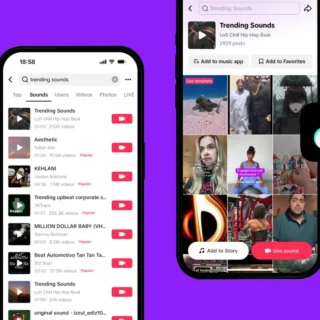Lucky Girl Syndrome: Manifestation or Modern Myth?

Can You Think Your Way Into Good Luck?
If you’ve been on TikTok lately, you’ve probably heard of Lucky Girl Syndrome. It’s the idea that using manifestation techniques—like affirmations and visualizations—can make you more “lucky” in life. But is it a legitimate mindset shift or just another social media trend with no real substance?
Let’s dive into the psychology, controversy, and potential of this rising belief. Is it a new path to empowerment or simply a glittery illusion? Either way, it’s sparked a conversation that’s impossible to ignore. We’ll explore its science, its criticism, and what it reveals about how we understand luck and self-belief in the digital age.
What Is Lucky Girl Syndrome?
This internet-fueled mindset centers on the belief that good things naturally happen to you. Lucky Girl Syndrome (LGS) gained traction when creators began confidently declaring, “I’m just lucky—things always work out for me.” But is it optimism, a manifestation practice, or a modern twist on the Law of Attraction?
At its core, LGS suggests that if you believe you’re lucky, you’ll start to experience luck. It encourages people—mostly women—to trust that the universe has their back, shifting how they think, feel, and act.
Common Lucky Girl mantras include:
- “I’m so lucky; everything works out for me.” – Encourages trust in life’s unfolding events.
- “Good things are always happening to me.” – Trains the mind to notice positivity.
- “The universe is always working in my favor.” – Creates an emotional sense of support in uncertain times.
While these lines sound a bit magical, LGS overlaps with real psychological processes—how expectations shape attention, habits, and choices. If you want to see how creators explain it in their own words, watch this quick clip from TikTok creator Rachelle Indra, who breaks down the mindset in a few bite-sized moments:
Quick note: Rachelle’s clip is a good example of the upbeat, practical framing LGS often uses — but keep reading for the flip side: critics who say mindset alone can’t erase structural barriers.
How Manifestation Techniques Can Boost Belief (and Behavior)

Many people think manifestation means magically attracting things by simply wanting them. But in practice, manifestation techniques work because they align thought with action, awareness, and confidence. They help your brain recognize opportunities you might otherwise overlook.
Here’s how each method shapes mindset through cognitive reinforcement:
- Affirmations: Repeating positive statements like “I’m worthy of success” or “I attract good energy” challenges your inner critic and rewires self-doubt into self-belief.
- Visualization: Mentally picture yourself achieving your goal—what it looks and feels like. This mental rehearsal builds confidence and primes you for real-world action.
- Scripting: Write about your life as if your goals have already happened: “I love my new job and the freedom it gives me.” This strengthens belief by letting your brain experience success before it happens.
- Gratitude journaling: Listing things you’re thankful for, even the small ones, helps train your mind to focus on abundance over lack, naturally cultivating optimism and resilience.

These techniques don’t guarantee success—but they do nurture a mindset that’s more open, grounded, and ready to act. That’s why the manifestation mindset isn’t just fluff—it’s a tool.
Before diving into deeper criticisms, let’s pause to explore the lively debate Lucky Girl Syndrome has sparked—especially online. While some embrace it as empowering, others call it unrealistic—or even harmful.
Lucky Girl Syndrome: Confidence Boost or Just Toxic Positivity?

As Lucky Girl Syndrome gained traction, so did the conversation around its legitimacy. On one side, advocates argue that using manifestation techniques gives people—especially women—a sense of control, confidence, and emotional resilience. They say it’s a low-cost, accessible way to feel empowered in a world that often feels chaotic.
But on the other side, critics push back, calling it performative optimism. They argue that not everyone has the luxury of simply “thinking positive,” especially those facing systemic disadvantages, trauma, or mental illness. For them, LGS can feel tone-deaf, promoting the illusion that success or healing is just a mindset away.
For many mental health professionals, the concern isn’t optimism—it’s oversimplification. When complex issues like burnout or depression are reduced to “just think lucky,” it risks invalidating people’s real struggles.
So, is Lucky Girl Syndrome a helpful mental shift—or a trendy distraction from deeper work?
What TikTok is Saying
The debate isn’t just happening in blogs and think pieces—it’s unfolding in real time on TikTok. Below are two contrasting videos that capture the heart of the conversation:
1. Manifestation as Empowerment
TikTok creator @lauren_bulloch shares how Lucky Girl Syndrome helped her feel more confident, focused, and emotionally grounded.
But not every story is uplifting.
2. The Flip Side of Toxic Positivity
TikTok user @theminimalist talks about how the trend felt invalidating during a time of burnout and grief, showing that mindset alone can’t always shift emotional reality.
These videos reveal just how personal—and polarizing—the experience of Lucky Girl Syndrome can be.
But Wait—Is This All Just Privilege in Disguise?
Building on the debate above, it’s important to go deeper into the criticism that Lucky Girl Syndrome often ignores the complex realities many people face. Not everyone can “think” their way out of struggle—and framing life’s challenges as mindset issues can unintentionally invalidate those experiences.
Critics argue that belief alone doesn’t dismantle injustice or trauma and that this trend often privileges those already in positions of safety or comfort. While the mantra feels uplifting, it risks overlooking the real barriers many face every day.
Here’s why this criticism matters:
- Privilege plays a role. Those with access to safety, education, or support systems may find it easier to believe in luck and opportunity.
- It can promote toxic positivity. Suggesting people “manifest” their misfortunes is harmful, especially when they’re already struggling with mental health or inequality.
- It overlooks real solutions. Belief is powerful—but it doesn’t replace therapy, community, affordable healthcare, or systemic policy reforms that address inequality at its root.

In short, manifestation can empower—but only when paired with awareness and action. Mindset matters, but it shouldn’t be the only tool we rely on.
Takeaway: Belief can’t replace policy—but it can support persistence.
The Upside: When a Manifestation Mindset Does Work
Despite the critique, there are clear benefits to cultivating a positive, intentional mindset. When used thoughtfully, a manifestation mindset can strengthen self-trust, build resilience, and support emotional regulation. It’s not about avoiding struggle—it’s about approaching it with belief in your ability to grow.
According to a 2021 study in Frontiers in Psychology, maintaining positive expectations can improve emotional regulation and stress recovery—both essential for mental well-being.
So how does it help?
- It encourages possibility thinking.
Possibility thinking means assuming good outcomes are possible—even if they’re not guaranteed. Instead of focusing on what could go wrong, you ask, “What if this works out?” That mindset doesn’t erase fear, but it opens the door to hope and action. When you assume things can go well, you’re more likely to pursue opportunities—even when you’re scared. - It softens inner resistance.
We all have mental blocks—self-doubt, fear of failure, and imposter syndrome. That’s inner resistance: the part that slows us down before we even start. A hopeful mindset doesn’t erase that voice, but it lowers the volume, making it easier to take small, consistent steps forward. - It reduces stress and improves outlook.
Positive expectations can lower anxiety and boost emotional balance. People who believe they’re “lucky” tend to recover faster from setbacks, viewing them as detours rather than dead ends. That’s not luck—it’s perspective.
In the end, it’s not about blind optimism—it’s about giving yourself a fighting chance to believe in something better. When you shift your mindset, you shift your energy—and sometimes, that small shift is all it takes to begin again.
Watch Out: When Manifestation Turns Into Avoidance

Here’s the part often glossed over in glittery TikToks—sometimes, manifestation becomes a way to escape rather than empower. It can slip into avoidance when we use it to sidestep discomfort instead of facing it.
Here are a few signs you might be drifting into toxic territory:
- You suppress your real feelings. Saying “I’m fine” when you’re not isn’t manifesting—it’s masking.
- You blame yourself for everything. If your first thought after something goes wrong is “Did I manifest this?”, that’s a red flag.
- You avoid action. Believing something will happen without taking real steps toward it isn’t manifestation—it’s magical thinking.
A grounded manifestation mindset allows space for grief, anger, and doubt. It says, “I can feel this pain, and still believe better days are coming.”
True manifestation acknowledges pain—it doesn’t bypass it.
Are Lucky Girls Just More Prepared?
So if it’s not magic, what is it? Maybe Lucky Girl Syndrome isn’t about luck at all—it’s about readiness. People who identify with the mindset might not be more fortunate; they might simply be more willing to act, ask, speak up, and stay open. The magic isn’t in the universe—it’s in their behavior.
These “lucky” individuals often:
- Speak to themselves with kindness. Instead of tearing themselves down, they build themselves up daily—and that gentle self-talk becomes a foundation for resilience.
- Take intentional risks. They say yes to new friendships, open up in therapy, travel solo, set boundaries, or start something new—not because they’re fearless, but because they’re hopeful. They trust that something better could be waiting on the other side of discomfort.
- Recover more quickly. When something fails, they reflect and try again. It’s not because they never doubt themselves—it’s because they trust success is still possible.
That’s the quiet power of the manifestation mindset—it nudges you toward growth, even when the odds aren’t perfect.
Healthy Manifestation Habits: Staying Grounded While You Dream

You don’t need to go full crystal-and-moon-phase to try manifestation techniques. All it takes is a little daily awareness and a whole lot of self-compassion. Here’s how to use these gentle tips without losing your grip on reality:
Try This Daily:
- Say one gentle affirmation. Choose something true and kind, like “I’m learning to trust myself” or “I’m open to unexpected blessings.”
- Visualize one goal. Not your entire dream life—just one thing you’d like to feel or do today. Picture how it would look and feel.
- Name three wins each night. No matter how small. This trains your brain to spot progress and build momentum.
Do This Weekly:
- Check in with your feelings. Ask yourself: What felt good this week—and what drained me? Did I honor my boundaries? Was there a moment I needed support but didn’t ask for it?
These gentle questions help you tune into your emotional needs, instead of ignoring or bypassing them. - Write without filters. Grab your journal or notes app and let it spill. Write what’s really on your mind—messy, unedited, and honest. Then, once the noise is out, choose one small intention for the week ahead: What do I want to feel, shift, or practice more of?
- Choose curiosity over control. Instead of obsessing over results, ask: What would happen if I simply showed up and stayed open? This mindset isn’t passive—it’s grounded in trust. It allows space for growth without demanding perfection or guarantees.
These aren’t shortcuts—they’re supports. You’re still the one steering the wheel.
That’s where belief meets action—the real source of momentum.
Still Unsure? You Don’t Have to Choose One Side
You don’t have to fully buy into the cosmic side of manifestation to benefit from some mindset shifts. Maybe you’re skeptical of Lucky Girl Syndrome, but curious about what would happen if you talked to yourself like you believed in your potential. That’s enough.
Even a small mindset shift can activate cognitive pathways that influence motivation and emotional resilience.
Ask yourself:
- What if something did go right this week?
- What would I try if I didn’t fear failure?
- Can I treat myself with the same hope I offer others?
You don’t need to be lucky—you just need to believe that something good is still possible.
Is Lucky Girl Syndrome Real or Just a Fantasy?
It’s a bit of both. Manifestation techniques can be empowering when paired with honesty, effort, and self-awareness. However, they’re not a cure-all, and they certainly aren’t a replacement for genuine support or lasting change.
Remember:
- Lucky Girl Syndrome is a mindset—not a magic trick.
- Belief and action work best together.
- You can hold space for hope, healing, and hard truths all at once.
FAQs
1. Is Lucky Girl Syndrome backed by psychology?
Not directly—but it draws on psychological principles like self-efficacy and positive expectancy. These concepts suggest that when you believe good things can happen, you’re more likely to take actions that make them possible. So while the “syndrome” isn’t a scientific diagnosis, its effects overlap with proven mindset research.
2. Can manifestation really change your brain or behavior?
Yes—to a degree. Studies in neuroplasticity show that repeating positive thoughts and visualizations can strengthen neural pathways related to motivation and confidence. That means your mindset can shape behavior, but it works best when paired with consistent action, not just wishful thinking.
3. What’s the difference between manifestation and toxic positivity?
Manifestation invites awareness, while toxic positivity denies reality. Healthy manifestation acknowledges fear, doubt, and pain—but still chooses hope. Toxic positivity, on the other hand, pressures you to “just stay positive,” even when you need to process valid emotions.
4. How can I practice healthy manifestation without denial or guilt?
Start by grounding your affirmations in truth (“I’m learning to trust myself” instead of “Everything’s perfect”). Allow room for your emotions—especially the hard ones—and remember that self-compassion is more powerful than constant positivity. The goal isn’t perfection; it’s presence.
Ready to Be Your Version of Lucky?
Maybe “lucky” isn’t a personality trait—it’s a practice. If you’re willing to shift how you speak to yourself, how you act, and how you believe in your future, you’re already beginning.
Because the luckiest people aren’t the ones with no obstacles—they’re the ones who keep believing, even when life tests that belief.
If this spoke to you, pass it on to someone who needs a gentle reminder that they’re capable. Or share your story below: Have manifestation techniques changed your life—or left you questioning the trend? Let’s talk it out.


